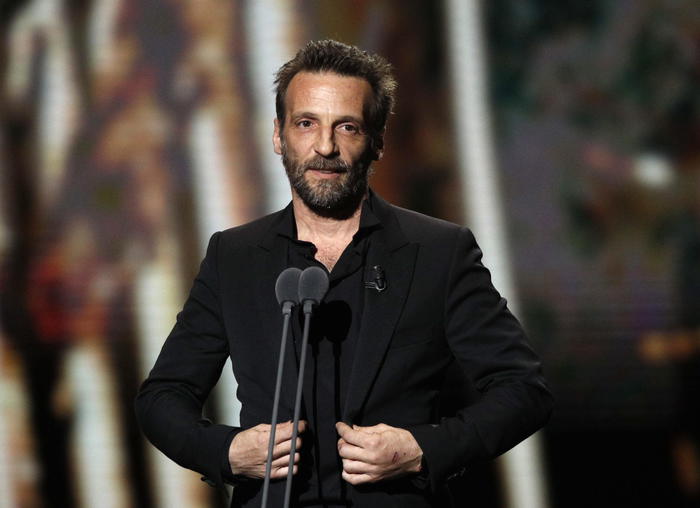“A long time ago, I made a promise to my mother: that I would find the son she lost.
I don't know how I could promise him such a thing."
These are the words of Jina, the narrator of
The Wait
, the comic that tells the story of her mother, Gwija, a 92-year-old woman who lives with the expectation of being reunited with the son from whom she was separated during the exodus of civilians who fled from north to south at the start of the Korean War in 1950. Keum Suk Gendry-Kim, author of the monumental
Grass
,
the only comic that slipped into the list of the 100 best-seller books in Spain last year, once again delves into the history of his native country, South Korea.
This time she does it, inspired by the experiences of his own mother, to recount those of thousands of families separated after the division of Korea in 1953 in this graphic novel published in Spanish by Reservoir Books.
More information
Drawn Memoirs of a Korean Sex Slave
Unlike Lee Ok-Sun, the sex slave who stars
in Grass
, Gwija is a fictional character, but her appearance and character are hardly made up.
The author explains that she chose to give him the features of her own mother, that she had separated from her older sister in the fifties.
During her creative process, her mother commented on the illustrator's sketches.
"Why do you give me such an ugly nose?
You could have drawn me fewer wrinkles, ”she complained at first.
Cover of the graphic novel 'The Wait'. Penguin Random House
His mother's sister stayed in the north because she failed to board a train packed with refugees heading south to escape the front lines of the burgeoning communist-liberal war on the Korean peninsula.
In
The Wait
, Gwija constantly asks her daughter if she has any news from the Red Cross, which organized sporadic family reunions, something that the illustrator's mother also did with her.
—Why did you decide to invent a character when you could use your mother's testimony, which you knew firsthand and which was real?
—I thought that the story of a mother who had lost her son would reach more readers.
It is more touching than the one of two separated sisters.
In any case, my mother's story is also implicitly told in
The Wait
.
But mostly, I went for fiction because many people were afraid that by publishing their story, they would harm those close to them who were still in North Korea.
Comic book artist Keum Suk Gendry-Kim (left) with her mother.PENGUIN RANDOM HOUSE
To collect testimonies, Keum Suk Gendry-Kim met in 2018 with several elderly people who had been reunited with relatives in the north thanks to Red Cross programs.
The author admits that she had the feeling that they were not telling her the whole truth: “They did not tell me the whole story for fear of reprisals, that her relatives would be executed or imprisoned.
In South Korea, they could also be disadvantaged when it comes to finding a job if it was made public that they had family on the communist side.”
The base of the South Korean Government registered in 2022 a total of 132,124 people separated from their families as a result of the conflict.
Of these, 90,514 had already died, leaving 43,160 survivors, among whom those over 70 years of age represent 85%.
In the last meetings of 2018,
The cartoonist deplores that in Korea the issue of separated families is "very seen", according to her.
“Those who lived through that separation are from a generation that is about to disappear.
It is something of 'grandparents' for today's youth.
But recently there has been an increase in tension between the two countries, the chances of a war like the one in the past seem to grow, ”she is alarmed.
The author recounts that as a child at school they were taught that the North Korean communists were weak and bad: “As a school assignment, they once made us draw a poster to express anti-communism.
This ideological confrontation continues to be a pending problem.”
Page from 'The Wait', in which Gwija (right) and her friend transform into trees.PENGUIN RANDOM HOUSE
The image of the barbed wire, a symbol of this forced and human-imposed separation, surrounds the comic, as it appears on the first and last pages.
Faced with this impossibility of tearing it down and reducing tensions, Keum Suk Gendry-Kim proposes a narrative solution: “We have a border and there is a 25-kilometre fence there.
No one can pass through it, but nature can.
Nature doesn't care that there is a border between the two Koreas."
For this reason, both in
La espera
and in
Hierba
, the landscape and vegetation take center stage to express the most painful moments.
“I prefer to express suffering and misery through the beautiful landscapes of nature, rather than in a direct and explicit way, because that contrast makes it more impressive”, he justifies.
In a scene from the graphic novel, Gwija, already old and withered —she has gone one-eyed and walks with difficulty with a cane—, meets a friend of hers, who also left part of her family behind.
As they reminisce about their youth in the north, they transform into trees for a few panels.
Subscribe to continue reading
Read without limits
Keep reading
I'm already a subscriber

/cloudfront-eu-central-1.images.arcpublishing.com/prisa/QKW5O2U64JEWJNQVARAVDNFOLU.jpg)


/cloudfront-eu-central-1.images.arcpublishing.com/prisa/DNRYCWU6TFHD5AKHCDDWYTYIRY.jpg)









/cloudfront-eu-central-1.images.arcpublishing.com/prisa/S7ERVSCT4FUVX6R7TUVBDNTH5Y.jpg)
